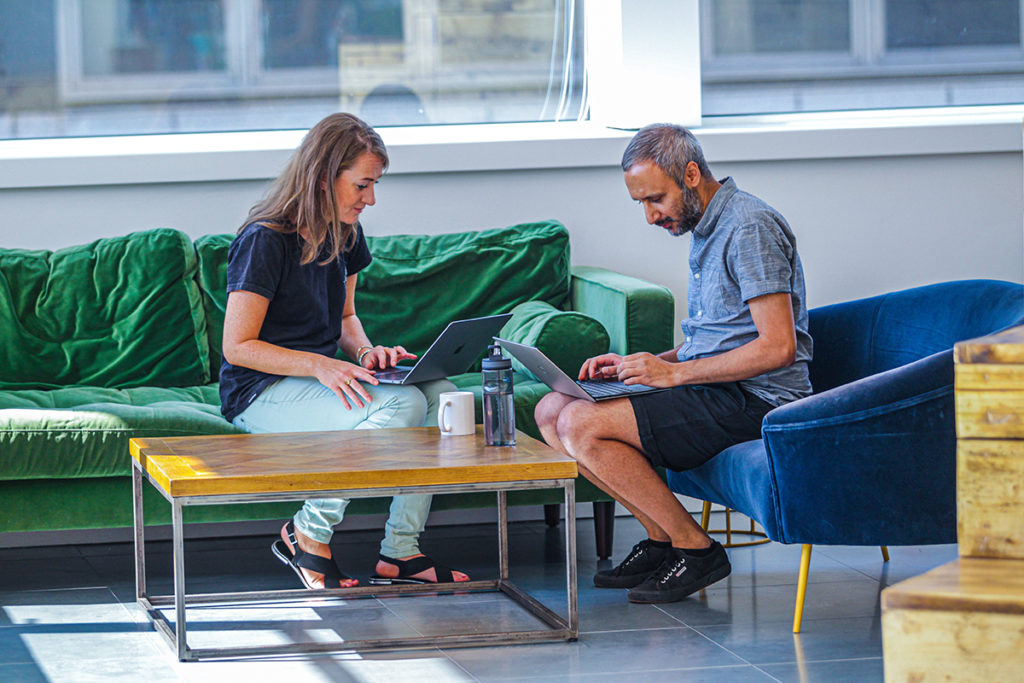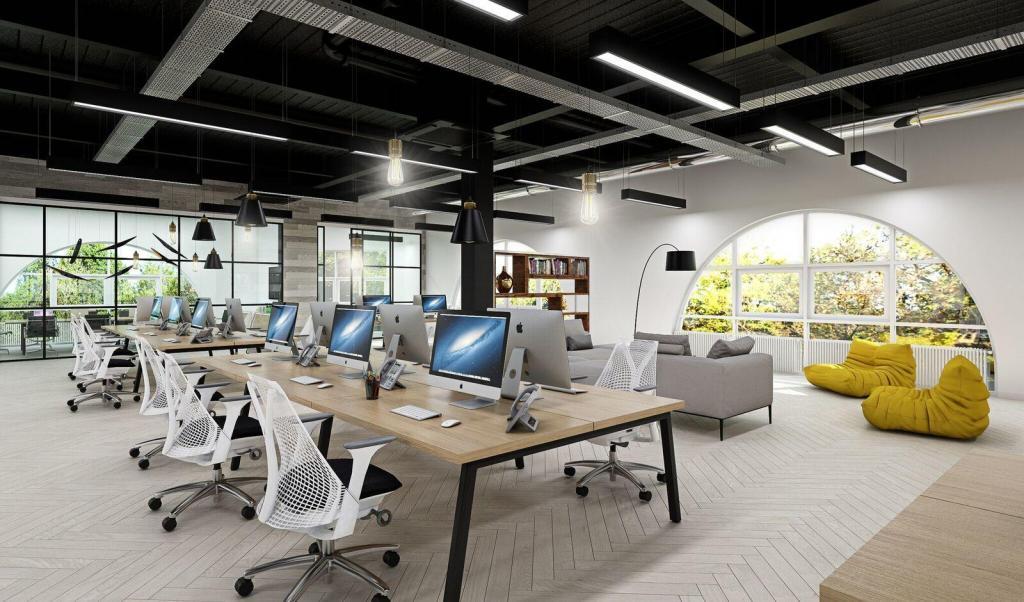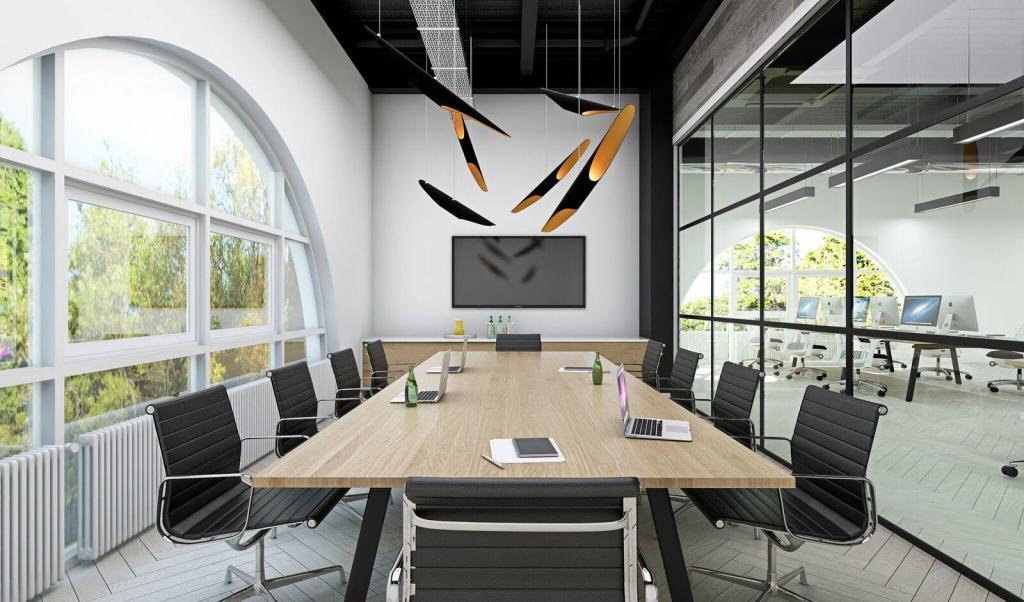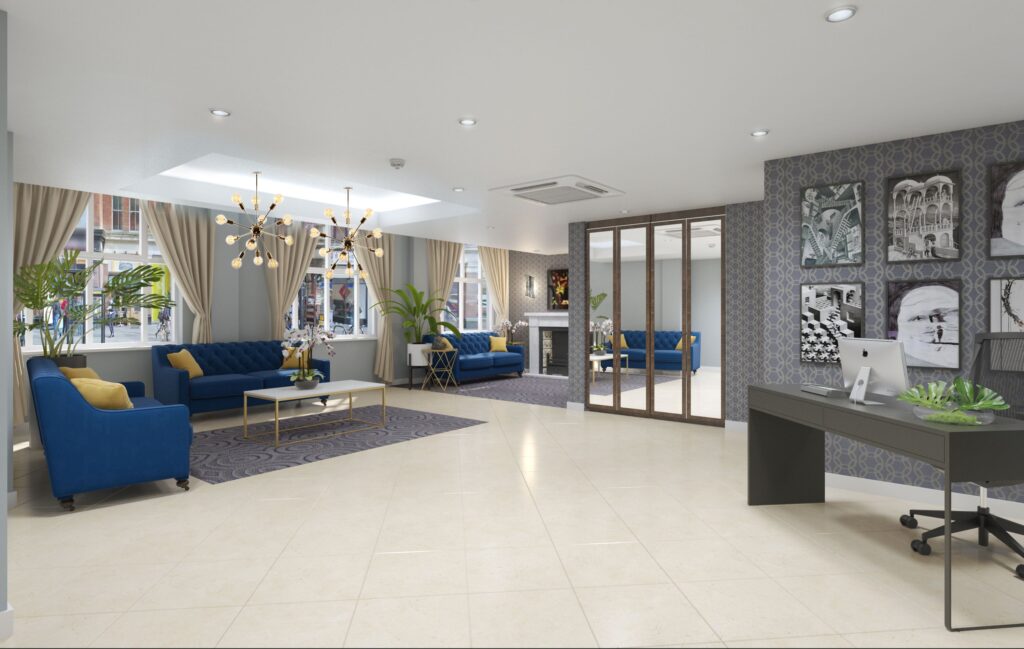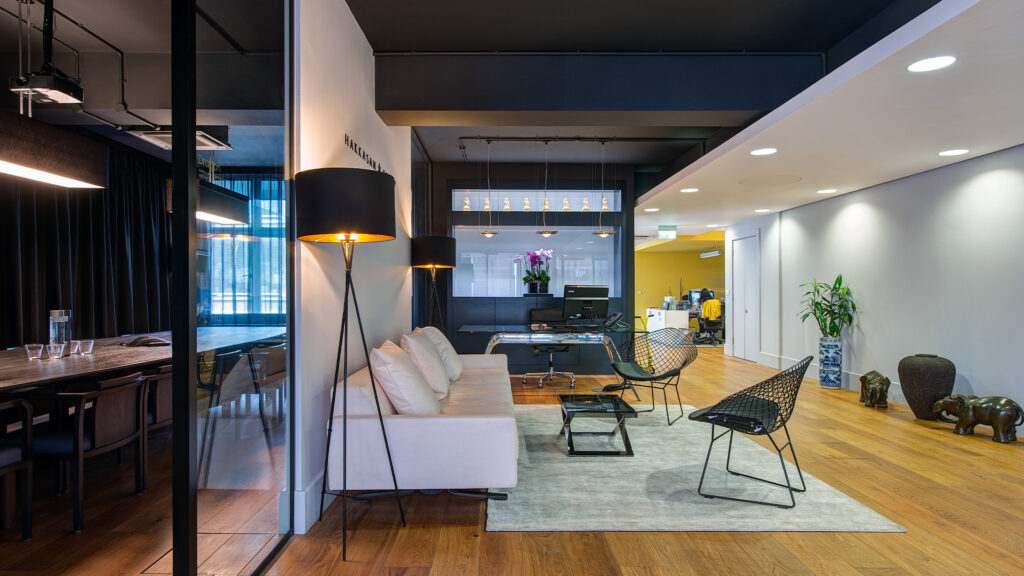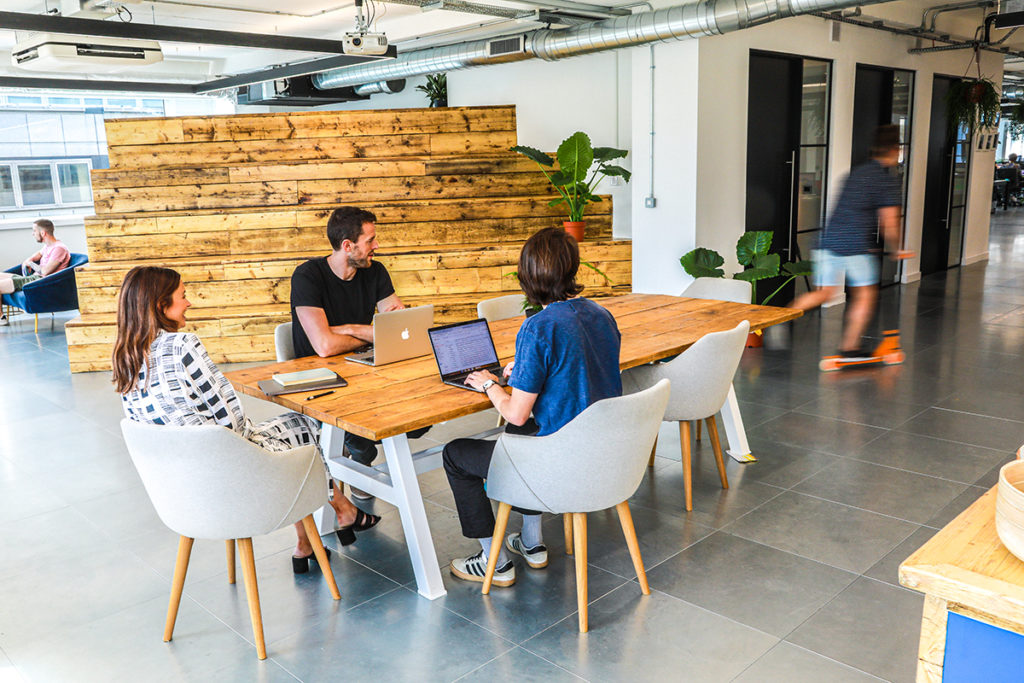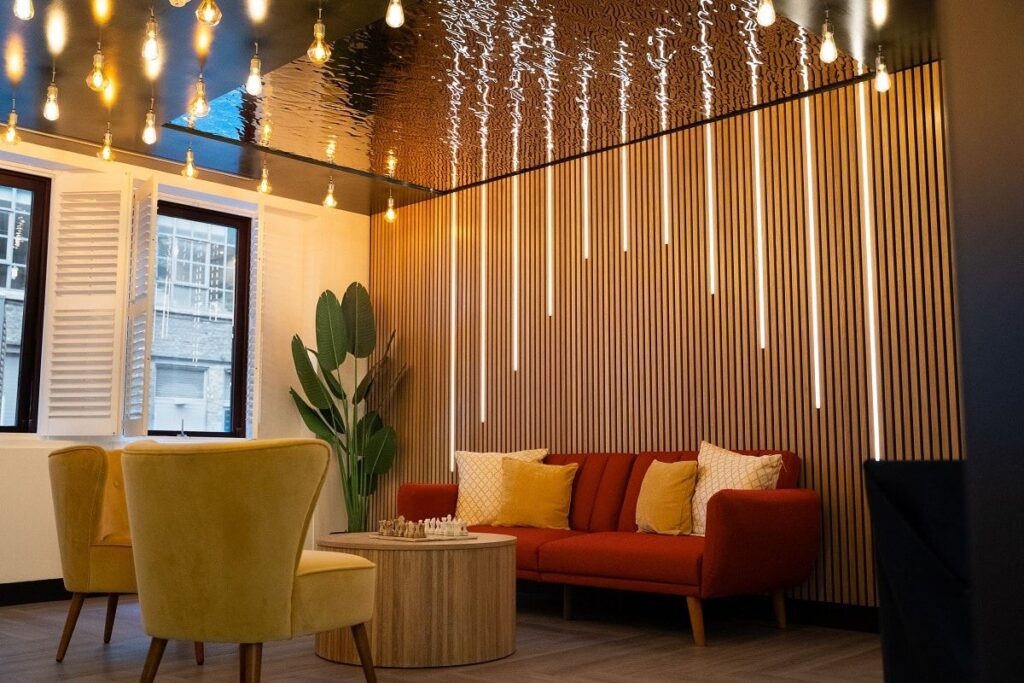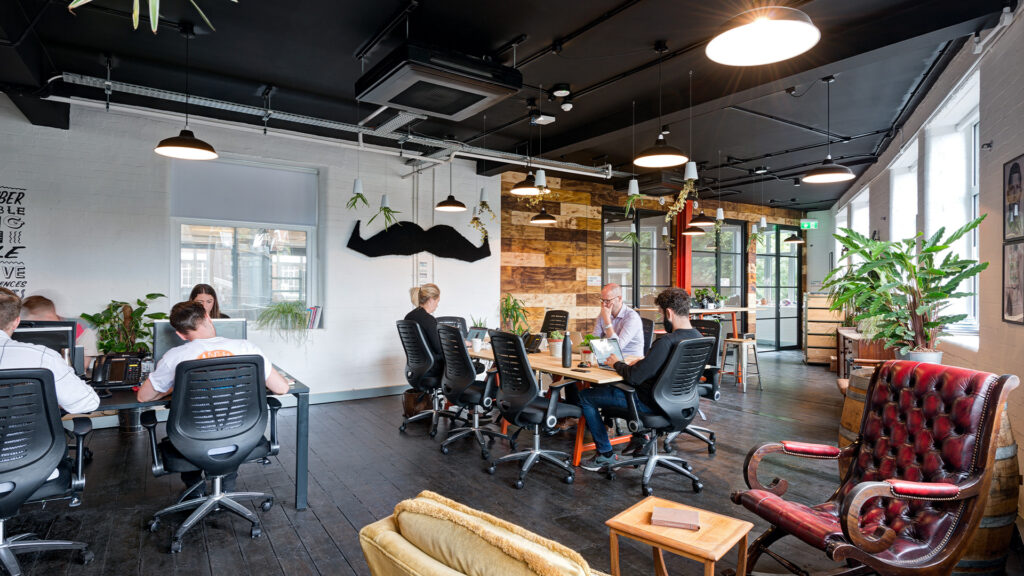Fancy opening up in London? You’re probably mad, especially if you have your eye on the West End. Once a notorious slum, this über-desirable tranche of real estate is now the most expensive office location in the world, leapfrogging Hong Kong and Madison/5th Avenue in the eye-watering hall of fame. An office in this location will set you back a staggering £1,443 per square metre per year—and that’s before you pay your electricity bill. Across the City, lease renewal tenants are facing a tough decision—suck up the rent hike or hand back the keys.
So what’s an SME like you to do? Well, you could send everyone home and tell them work out of Starbucks like every other freelancer in the city. You could pack up, ship out and take the slow boat to Hammersmith, Hackney, Hounslow or some other place beginning with “H.” You could even move down in the world—literally. Basements are big business in the office interiors world. Just before Christmas, Cleveland House in King Street, St James’s was snapped up for the princely sum of £62.50 per sq ft—a record for basement space in the capital.
And if you don’t want to move one floor closer to Hell? There is a third option—one that supports work quality, flexibility, staff mobility and productivity while simultaneously cutting the property overhead. Could flexible coworking give your office design the space it needs?
Office fit out, coworking style: think pods, third spaces and other unusual suspects
Coworking is the deliciously sticky name given to office interiors shared by small businesses, solopreneurs and independent contractors who are not connected to each other. In its barest form, coworking supplies a building, desks, wireless Internet and the usual jetsam of office design—printers, whiteboards and the like—for workers to hire. They bring pay-per-desk flexibility to the workers who might otherwise hire space by the soy latte.
What’s interesting about coworking is the way it has evolved in response to emerging work trends. Once rigidly open 9 to 5 (fun fact: “9 to 5 Group” was coworking’s embryonic name), most spaces now operate round the clock and offer a plethora of collaborative office design ideas: social drop-in zones, hot desks, breakout areas, nap rooms and sandboxes—isolated computing environments used by tech-types to test new code. Coworking isn’t just for creative types either. Plenty of corporate occupiers—accountants, lawyers, financiers and the like — are choosing coworking for their small business. Office design has responded by supplying exactly what these occupiers require from their business premises, such as concierge services and a well-stocked fridge. Whichever type of space you choose, you’ll always get a much-needed sense of community. Even in the era of nomadic working it’s still about having someone to eat lunch with.
Collaboration is key. Coworking forces businesses, who may be strangers, to work alongside each other. Far from being soulless cubicle farms, these are open and energetic office interiors conceived and designed around the economy of exchange—the idea that others have already found solutions to many of your challenges, and sharing those solutions makes everyone more productive in the long run. Need some help with your IT systems? Meet Joe, who rents out a desk a couple of days a week. An accountant? Step this way. Thoughtful office design solutions exist to support these reciprocal conversations. According to a recent University of Michigan study, coworkers are experiencing massive productivity returns as a result.
In a nutshell, coworking spaces are interconnected, inclusive and probably way cooler than any office interior design your SME can afford. Got it? Good. Because all of this got us thinking …
What can coworking teach us about your office design
Coworking isn’t just for hipsters and start-ups. In fact, the core coworking ethos resonates just as loudly with the single-office corporate occupier as it does with independent creatives. Tell us you don’t want to:
- champion knowledge exchange
- spark creativity
- collaborate based on trust and mutual sympathy
- nurture talent and watch it grow
- have staff look out for each other
- be stronger together
On the subject of office refurbishment, there are actually some pretty simple things you can do to encapsulate the coworking ethos into your (traditional, immutable) office design.
Make office interior design a moveable feast
You may not fancy shifting tables into different configurations, but it’s incredibly useful to play around with new office interior design formats to see what works best in different situations. A traditional classroom-style office interior is fine if want your employees to keep their eyes on the manager at the front and silently consume everything he has say. But if some form of mutual dialogue is required, you’re gonna have to get yourself something round.
Flexible, multi-purpose furniture is important in any coworking office interior design. Spaces tend to be liquid, so that members may use them in the way that suits them best. Offices will often double-up as meeting rooms and “free zones” can be filled with touchdown benches and used as additional project space when needed. It’s about giving members the benefits of being in an office without the restrictions of, well, being in an office.
By contrast, conventional office design puts everything in its place. People sit where the furniture tells them to sit and they work how the furniture tells them to work and their productivity stays the same as a result. Unconsciously, your office design is gearing your results. And if you don’t like the results you’ve been getting, your office design just isn’t working. That’s because….
The interior comes before the exterior
When we design an office refurbishment, do we create it around the inner needs of people or do we knock up some desks and watch everyone’s behaviour adapt to fit the space?
Actually, it’s a chicken and egg conundrum—the exterior shapes the interior, and vice versa. It’s only when we reformat the code that we begin to see the real processes of change—as coworking has done.
By definition, coworking spaces are inhabited by strangers. Members have none of the continuity or context that can cause relationships to become stale—not with each other, and not with the office design. And because there’s no concept of “fixed,” there are no facts, just interpretations. The community decides how they work. The community decides when, and where, and how to collaborate. All the office design has to do is allow people to make those decisions.
“We make our buildings and afterwards they make us.”
— Winston Churchill
The fact is, not everyone works the same way. Offices must feed an alphabet soup of Gen X, Y and Z who have their own working styles and preferences; extroverts who prefer the idea-sparking sociability of communal spaces and introverts who need respite from the noise. The trick is to build flexibility into the office design and create office interiors where people can spontaneously interact or hide when they need to focus. Good, coworking-orientated workspaces acknowledge that human beings work best as human beings—capable of limitless creativity when they are empowered by their office fit out, not constrained by it.
Good office fit out gets rid of redundant space
Coworking, distilled, is allowing home-based workers to colonise shared spaces when they need to collaborate. Office-based organisations can steal the concept by making their staff mobile while providing a streamlined hub for bringing them back together again. Businesses that maximise mobile working can effortlessly scale up or down as their workforce grows and changes.
Mobility changes the ratio of workers to square footage. Office interiors that are designed to hold 40 permanent workers can easily hold 60, 70 or 100 mobile workers, where colleagues hot-desk, work from home and work at different times throughout the week. That’s a bunch of extra productivity without adding a penny to your rent bill. Don’t want to expand? Try subletting your newly freed-up space to other small businesses. Co-mingling with third parties introduces a new set of skills into the workplace, and you’ll also generate an entirely new revenue stream—a boon when office overheads are draining your resources.
Mobility changes the ratio of workers to square footage. Office interiors that are designed to hold 40 permanent workers can easily hold 60, 70 or 100 mobile workers, where colleagues hot-desk, work from home and work at different times throughout the week. That’s a bunch of extra productivity without adding a penny to your rent bill. Don’t want to expand? Try subletting your newly freed-up space to other small businesses. Co-mingling with third parties introduces a new set of skills into the workplace, and you’ll also generate an entirely new revenue stream—a boon when office overheads are draining your resources.






